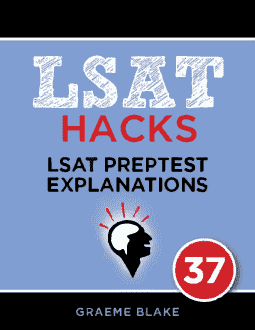QUESTION TEXT: A year ago the government reduced the…
QUESTION TYPE: Necessary Assumption
CONCLUSION: We can reduce traffic fatalities by lowering speed limits.
REASONING: Last year the government lowered speed limits and traffic deaths declined.
ANALYSIS: This argument makes a causation-correlation error. It presents no evidence that the speed limit change caused the decrease in traffic deaths. That could have been a coincidence.
___________
- If highway traffic increased then the argument would be even stronger. We would expect more accidents if there are more drivers.
- The argument would still be ok if 49% of drivers (not a majority) obeyed the speed limit.
Most people do in fact disobey highway speed limits. But they’ll drive slower if the limit is lowered, even if they still go above the limit. - This is very tempting. But it says “number of automobile accidents”. The conclusion talks about fatalities. You can be in an accident but not die.
- The argument would be ok if the new speed limit was only enforced at the same level of strictness as the old speed limit.
- CORRECT. If this were true then we shouldn’t be surprised that fatalities fell. They probably would have fallen even without the reduction in the speed limit.

Free Logical Reasoning lesson
Get a free sample of the Logical Reasoning Mastery Seminar. Learn tips for solving LR questions


I still do not understand why E is correct. The flaw in this argument is that we do not see necessarily that the speed limit caused the reduced fatality rate. That flaw exists whether or not the fatalities from the year before was higher. All that does is make the actual flaw more likely to be true, but it’s not a flaw within itself.
This question is tricky because the correct answer choice doesn’t match our prephrase. You’re right that the flaw is we can’t see that the speed limit caused the reduced fatality rate. But answer choice E does actually still state that idea, just in a more convoluted way.
Imagine it’s 2021 and in 2020, a speed limit was implemented. Traffic fatalities fell. But in 2019, cars underwent a major redesign that also reduced traffic fatalities. This means that since 2019, traffic fatalities were already on a downward trend, and so, casts doubt on the idea that the speed limit caused the reduction.
That makes sense, thanks!
Hi Graeme,
Two questions about this one. This question appears in the Cambridge Flaw drilling packs with the questions stem of “The argument is most vulnerable to criticism that it takes for granted that.” But here in the explanations it’s treated as a necessary assumption question. Is it because the flaw is itself a mistaken necessary assumption that the argument makes?
The next question is more about trying to understand better why choice E is correct. Your explanation reminded me of the statistical phenomenon of regressing toward the mean, plus there is the associated reasoning error that can arise called the regression fallacy. From this perspective, the argument fails to take into the account the possibility that regressing toward the mean is what explains the decline in road fatalities. After all, if the number of fatalities was off the charts, it probably has only one way to go from there–downward. Is that what you’re getting at in the explanation for choice E?
It’s both types. It’s asking what the argument takes for granted, and also what makes the argument vulnerable to criticism. Takes for granted = assumption.
All classification schemes break down at the edges.
Yes, regression to the mean was what I was thinking of. The word “abnormally” was the key: it implies that we should not have expected the increase to continue. So E introduces a strong alternate possibility.
I actually can’t say if it’s necessary or not, but I feel this question could be answered with a flaw from or a necessary assumption frame. Negation worked for me when I did it.
(As a rule, road casualties don’t suddenly increase and stay high permanently. At least in North America the trend has been continuously downwards)
Hi Graeme,
I am still having a bit of trouble understanding the reasoning behind why E is the correct answer. You stated that the fatality rate would decrease even without the reduction of the speed limit. However, why is it that you have to assume that the number of fatalities fluctuate year to year?
The way I interpreted the argument is as follows: the argument is making a casual claim based on one example ( the city where the reduced highway speed limit took place) and extending it to a more general observation that could potentially be applicable to other communities. Thus, E would be the correct answer because if you DO assume that there was a higher number of fatalities the year prior, then it would seem that the one example could no longer be used to make such a generalization/causal claim.
Any help in clarifying this would be greatly appreciated.
Thank you,
Ariel
Hi Ariel,
You’re on the right track, but the main issue with the argument is not that it’s making a causal claim based only on one location, but on a change in number of fatalities between just two years.
This tells us nothing about trends, or how many fatalities there were per year on average with the old speed limit, so there’s no evidence supporting a causal claim. The argument ignores the possibility that the average number of fatalities for the past ten years (for example) was the same, or lower, than in the year after the change in speed limit — and that’s why (E) is correct.
Hope that helps!